- 자궁수축이 지속될 때
- 과거에 자연유산을 한 임신 경력이 있을 때
- 미숙아를 분만했던 과거 병력이 있을 때
- 그 동안 있었던 태동이 더 이상 감지되지 않을 때
- 고혈압이나 자간 전증과 자간증 (임신중독)이 있거나 호흡기계나 심장 순환계에 어떤 이상이 있을 때
- 빈혈이 있을 때
- 자궁 출혈로 피가 몇 방울정도 나오든지 그 이상 나올 때
- 쌍태 임신, 삼태 임신 또는 그 이상 다태 임신을 했을 때
- 전치태반이 있을 때
- 자궁경부에 부전증이 있을 때
- 그 외
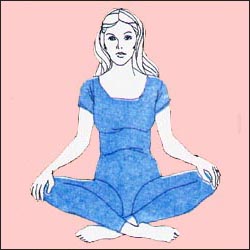
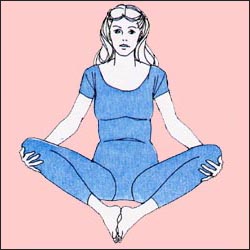
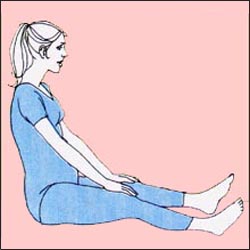
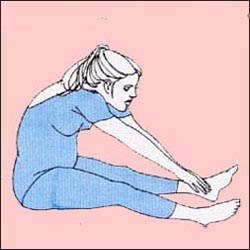
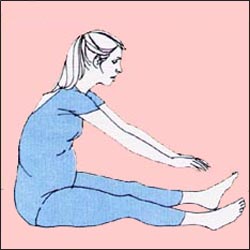

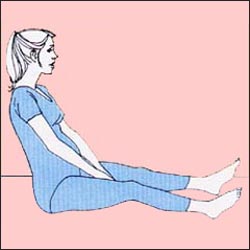
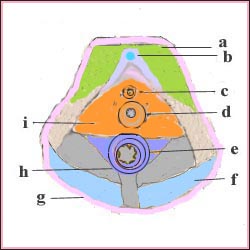

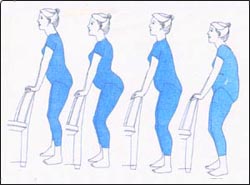
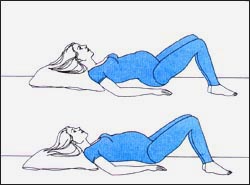
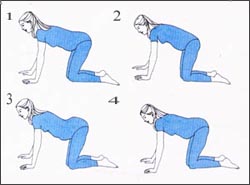
Copyright ⓒ 2014 John Sangwon Lee, MD., FAAP
Physical exercise and pregnancy exercise during pregnancy 임신 중 육체적 운동과 임신 체조
- Proper physical exercise during pregnancy boosts heart and lung function and balances the body.
- Proper physical exercise improves the circulation of blood and lymph, improves digestion, and strengthens muscles, joints and bones. In the brain, biochemicals such as serotonin, dopamine, and endorphins are secreted in a balanced manner, and metabolism is good.
- In addition, stress is reduced, tension is relieved, and pain such as muscle pain, abdominal pain, headache, and joint pain is reduced. It also makes me feel better and more hopeful. Proper physical exercise during pregnancy will give you more endurance than during delivery.
- Endurance can be improved to make delivery more effective. Postpartum recovery is faster after delivery. It is said that the muscle pain that can come from delivery is less and the pain recovers more quickly.
- And after delivery, depression is less common.
- It is advisable to continue the physical exercise you normally did during your daily life before pregnancy as directed by your doctor during pregnancy. Whether you have a single pregnancy, twins, or more, depending on the number of months of pregnancy or the presence and extent of complications arising from pregnancy, the type and degree of physical exercise during pregnancy may differ.
- Therefore, it is advisable to consult a doctor before starting physical exercise during pregnancy to make decisions about the type of exercise and conduction.
- Also, if you have any abnormalities in your pregnancy while you are doing it, consult your doctor immediately.
- When there is no abnormality during pregnancy and a single pregnancy is normally performed, one of the pregnancy gymnastics that can be done according to the instructions of a doctor is introduced below.
- However, it should be mentioned here that pregnancy gymnastics is not recommended in common for all pregnant women.
- If a pregnant woman has any of the following symptoms or symptoms, they should consult with a doctor before starting pregnancy gymnastics and exercise according to the doctor’s instructions, as well as the usual physical exercise in daily life.
- When uterine contractions continue
- When you have a history of pregnancy with a natural abortion in the
- past
- When you have a history of delivering a premature baby
- When the birth movement that has occurred during that time is no longer detected
- High blood pressure,
- preeclampsia and eclampsia (pregnancy poisoning),
- or any abnormalities in the respiratory or cardiac circulatory system
- When you have anemia
- When uterine bleeding causes a few drops of blood or more
- When you have a twin pregnancy, a triplet pregnancy, or a multiple pregnancies
- When you have placenta previa
- When you have cervical insufficiency etc
The most healthy pregnant woman during pregnancy will explain in more detail the various things that a pregnant woman should do and what to do with caution in order to deliver a healthy baby.
Taylor sitting
Taylor sitting The following pregnancy gymnastics are usually not recommended for all pregnant women. Physical stability is absolutely essential for some pregnant women. Therefore, pregnant women should do pregnancy gymnastics and physical exercise according to the doctor’s advice and recommendations.

Taylor Seating Sit on the floor or on the floor as shown in the picture. Bring your feet as close as possible to the area with the external genitalia and sit with your ankles stacked. In this way, continue doing this exercise until you feel uncomfortable. Repeat this exercise as many times a day as you can.
![]()
Taylor press
The following gestational gymnastics are not usually recommended for all pregnant women. Physical stability is absolutely essential for some pregnant women. Therefore, pregnant women should do pregnancy gymnastics and physical exercise according to the doctor’s advice and recommendations.

Taylor press
![]()
Sit on the floor as shown in the picture and put the soles of your feet together. Pull both feet back to the side of the vulva until they are uncomfortable and can no longer be pulled. Hold your right hand under your right knee and your left hand under your left knee. Then, with your hand, gently push each knee up and down as much as you can, while lowering each knee until it no longer descends from top to bottom. Slowly and vigorously lower your legs from top to bottom, counting one, two, three according to the rhythm. Repeat this exercise about ten times. And I do it twice a day.
Taylor stretches
The following gestational gymnastics are not usually recommended for all pregnant women. Physical stability is absolutely essential for some pregnant women. Therefore, pregnant women should perform pregnancy gymnastics and physical exercise according to the advice and recommendations of a doctor.

Taylor Stretch ①
![]()
As shown in Figure ①, keep your back and back upright, sit on the floor and stretch your legs straight forward. With both legs straight forward, spread both legs sideways about 30cm between them. At this time, the right toe is to the right and the left toe is to the left.

Taylor Stretch ②
![]()

Taylor Stretch ③
![]()
Then, as shown in Figure ②, stretch both arms straight forward and place both hands on the left foot, and at the same time, bend the upper body toward the left foot. After that, sit in the posture just before starting the exercise as shown in Figure ①. Next, bend your torso forward and bring your arms and hands outstretched between your legs or halfway between your feet.

Taylor Stretch④
![]()

Taylor Stretch⑤
![]()
Then sit in the position just before starting this exercise. This time, extend both arms and hands straight forward, place both hands on the right foot, and at the same time bend the upper body toward the right foot. After that, sit in the original posture as shown in Figure ⑤. Repeat this exercise about ten times and do it twice a day.
Kegel exercise
The following gestational gymnastics are not usually recommended for all pregnant women. Physical stability is absolutely essential for some pregnant women. Therefore, pregnant women should do kegel exercise or pregnancy exercise according to the doctor’s advice and recommendations for pregnancy gymnastics and physical exercise.

Female pelvic floor anatomy and muscles
![]()
a-Mons pubis, b-clitoris, c-urethra, d-question, e-anal muscle, f-external anal sphincter, g-jupi, i-vaginal muscle
The Kegel exercise is a type of pregnancy exercise designed by Dr. Arnold Kegel. Kegel exercise is also called pelvic-floor exercises.
It is an exercise that makes your pelvic floor muscles strong and strong. There are several muscles in the pelvic floor. Those muscles are called pelvic floor muscles. These pelvic floor muscles participate in the normal functioning of women’s urethra, vaginal cavity, and rectum.
And the pelvic floor muscles surround the urethra, vaginal cavity, and rectum and support those parts.
If you exercise the pelvic floor muscles properly during pregnancy, those muscles become strong, and during pregnancy, until the baby is born, it properly supports the organs in the pelvis such as the baby and the uterus. It also plays a role in helping the baby to be born well through the birth canal during delivery.
If you do kegel exercise to strengthen your pelvic floor muscles, your pelvic floor will recover more quickly after childbirth.
And it can lead to less tension incontinence.
Proper exercise of the pelvic floor muscles strengthens and strengthens the pelvic floor muscles, and helps during delivery.
You can also relax and contract the pelvic floor muscles appropriately as needed.
How to do Kegal exercise effectively.
First, the function of the pelvic floor muscles can be found as follows. When you urinate, apply pressure underneath so that no drop of urine comes out. At this time, one of the pelvic floor muscles is the muscle that tightly closes the urethra so that urine does not come out through the urethra.
In addition, if the pelvic floor muscles are properly relaxed, urine that has stopped coming out will come out again. In this way, the urethra is tightly closed and relaxed, allowing you to urinate and stop while urinating, and the muscles that allow you to see are also one of the pelvic floor muscles.
In addition, the pregnant woman herself puts her finger in the vaginal cavity and puts the finger tightly in the vaginal cavity and applies pressure.
The vaginal cavity muscles that can function in this way also belong to one of the pelvic floor muscles.
When you contract the pelvic floor muscles vigorously, you can feel the sensitivity of the fingers inserted into the vaginal cavity being bitten by the force of the muscles in the vaginal cavity wall.
In addition, it can be said that the anus is closed and then opened by one muscle belonging to the pelvic floor muscles. With the pelvic floor muscles, the urethra, vagina, and anus can be contracted and relaxed, respectively, or all at the same time can be contracted and relaxed.
As described above, examine the functions of the pelvic floor muscles. Kegel exercise is a type of pregnancy exercise that can be performed while watching TV while standing, sitting, lying, or walking.
Take one example of doing a kegel exercise.
Sit comfortably on the floor. Contract the pelvic floor muscles as much as possible.
Do not suddenly contract or relax the pelvic floor muscles, but contract the pelvic floor muscles and count slowly from one to five in that state.
Then you can do the legal exercise by slowly recounting 1 to 5 and relaxing the contracted muscles again.
At first, the pelvic floor muscles are contracted slightly, and then, the contraction is more intense than before.
After contracting the last, slowly count the pelvic floor muscles that have already contracted from the column upside down to gradually relax.
If Kegal exercises are done properly, pregnant women can contract and relax the pelvic floor muscles during delivery as needed. You can find out if you’re doing the kegal exercise right: Proper contraction of the pelvic floor muscles while urinating can stop the urinary stem from coming out, and properly relaxing the pelvic floor muscles may cause the stopped urine stem to come out again.
If you put your finger into the vaginal cavity and contract the pelvic floor muscles, you can feel the sensitivity of the finger being bitten in the vaginal cavity. In this way, when you urinate, you can freely stop the urinary stem, or you can urinate again.
And it is possible to bite and release the small finger inside the vaginal cavity with the muscles of the vaginal cavity. In other words, if you can function like this, it is proof that you are doing the
Kegel pregnancy exercise properly. In addition, it can be seen indirectly that the kegal exercise can effectively and appropriately contract and relax the pelvic floor muscles.
Respiration exercise
The following gestational gymnastics are not usually recommended for all pregnant women.
Physical stability is absolutely essential for some pregnant women. Therefore, pregnant women should perform pregnancy gymnastics and physical exercise according to the advice and recommendations of a doctor.
When pain begins, pain, fear, anxiety, tension, and joy all begin together. Breathing naturally at this time can reduce the fear of delivery. The pelvic floor muscles are also less tense and can make delivery easier.
When labor begins and labor begins, the uterus involuntarily contracts and relaxes. Whenever the uterus contracts and relaxes involuntarily, the pelvic floor muscles and the muscles of the abdominal wall are effectively contracted and relaxed to facilitate delivery.
The pelvic floor muscles contract and do not relax according to the rhythm of contraction of the uterus and relaxation of the uterus.
When the contraction of the uterus stops and there is no pain, the uterus relaxes. At this time, you must rest enough mentally and physically.
When there is no pain, fatigue recovers, and energy is collected in order to survive the pain that follows well.
Then, when the uterus contracts again due to pain, it is used to experience pain with the energy accumulated during the period.
If you breathe well in harmony with the rhythm of pain during delivery, delivery can be made easier. So, the breathing exercise will be described in detail next.
① Relaxation breathing exercise
Lie comfortably on the floor.
Then, bend your knees upright and touch the floor with your two soles. Drink as much air as you can breathe in.
Then, slowly exhale the air inhaled deep into your lungs through your mouth, making a’sheep’ sound. At this time, completely relieve the mental and physical tension and take a rest.
Do these breathing exercises several times.
② contraction breathing exercise
When the pain continues for 30 to 45 seconds and the pain is caused by it, inhale deeply and exhale deeply in accordance with the rhythm of the pain. During the contraction and relaxation of the uterus from the beginning to the end of the pain, you should not breathe at any time, but inhale and exhale deeply in accordance with the pain rhythm.
You should use the breathing method you learned during pregnancy delivery training during delivery.
If you don’t know how to breathe during delivery, you should consult your doctor, nurse, midwife, or pregnancy training teacher to learn how to breathe contraction before delivery begins.
③ Abdominal breathing exercise
If the pregnant woman properly tensions and relaxes the abdominal wall muscles according to the rhythm of pain, it relieves the pain caused by pain and makes it easier to deliver. During pregnancy, practice abdominal breathing as follows: Put a blanket or sheet on the floor and lie comfortably on your back to relax all over your body. And put both hands comfortably on the stomach. Inhale slowly and deeply so that the abdominal wall pops up.
Then, with the abdominal wall up, you don’t exhale for 4~6 seconds, then take your abdominal wall up and down completely, open your mouth wide and exhale slowly.
Then, relax your mental and physical tension and rest for a while. Repeat this at least 4 to 5 times.
There are other types of breathing exercises in addition to the ①〜③ breathing exercises described above.
Before doing the above-described pregnancy exercises and pregnancy gymnastics, you should consult your doctor about whether you can do these exercises.
Consult your doctor or maternity teacher for more detailed breathing exercises.
Squatting pregnancy exercise

Sit down pregnancy exercise Consult your doctor before starting any of these exercises Properly doing squatting exercises can relieve tension in the muscles of the lower back and back and strengthen the pelvic floor muscles.
![]()
You can do exercises such as squatting, like opening and closing the bottom drawer. In addition, as shown in the picture, stand behind a sturdy chair, separate your knees a little, hold the top of the chair with both hands, and then squat slowly.
At this time, do not bend your toes and put your two soles on the floor. When lifting a heavy object about 7~23Kg from the floor, it is held in almost the same position as when doing squatting gymnastics.
When lifting an object during pregnancy, the lifting object should be lifted as close to the torso as possible.
When you squat and stand up, you need to put a lot of energy on your legs and stand up slowly.
Pelvic rocking exercise
 v
v
Proper pelvic displacement exercises during pregnancy can help in natural childbirth. Do these exercises according to your doctor’s recommendations.
![]()
Any kind of physical exercise beyond normal during pregnancy should be done only when recommended by the doctor after consulting with a doctor.
Properly performing pelvic translocation during pregnancy will strengthen the muscles of the back, back, and abdomen.
The back hurts less and the body posture improves.
There are three types of pelvic translocation exercises:
① As shown in the picture, stand 60cm apart from behind a sturdy chair, hold the top of the chair with both hands, stretch your arms straight forward, and gently bend your knees.
Gently push your buttocks back to relax your abdominal muscles. At this time, the back and waist are recessed like the saddle of a horse.
Then gently bend your knees forward and slowly pull your hips to the front of the chair.
Push your hips back under the chair as if someone else pushed your hips in front of the chair from behind.
Proper pelvic displacement exercises during pregnancy will help you deliver naturally. Start this exercise if your doctor recommends that you can do it.
② Lie on the floor with your back as shown in the picture, attach your legs and knees straight and bend them up. At this time, the soles of your feet are firmly placed on the floor.
At first, the muscles of the lower abdomen and hips are strengthened to strengthen the muscles in those areas. Place only the top of your back on the floor and lift your buttocks off the floor a little.
Then go back to your original position and relax your abdominal and hip muscles. When doing this exercise, bend your back to the maximum extent you can bend.
Repeat this exercise several times. Proper pelvic floor exercises during pregnancy will help you deliver naturally. Start this exercise if your doctor recommends that you can do it.
③ You can perform pelvic translocation exercise as shown in the following figure 1. Put your legs straight together, kneel down on your knees, and kneel down, with your arms a little apart from each other, stretch straight out, and place your palms on the floor to support your upper body.
At this time, straighten your back and waist, and spread a little between your legs. Then take a deep breath.
As shown in Figure 2, mainly use the muscles of the lower abdomen to bend the back a little. Then, exhale deeply and relax your whole body so that your back and back are drooping as shown in 3.
Then return to the original position as shown in Figure 1 and repeat this exercise several times from start to finish. When doing pregnancy exercises, you should not continue to do gymnastics if you feel uncomfortable, sick, or difficult to do gymnastics, or if you have any abnormalities while doing gymnastics. And you should ask your doctor, nurse, or gymnast if you can continue with this gymnastics.
Consult your doctor, nurse, or gymnast before doing this exercise, and you should not do this exercise unless they recommend it. Copyright ⓒ 2014 John Sangwon Lee, MD., FAAP
“부모도 반의사가 되어야 한다”-본 사이트의 내용은 여러분들의 의사로부터 얻은 정보와 진료를 대신할 수 없습니다.
“The information contained in this publication should not be used as a substitute for the medical care and advice of your doctor. There may be variations in treatment that your doctor may recommend based on individual facts and circumstances.
“Parental education is the best medicine.“